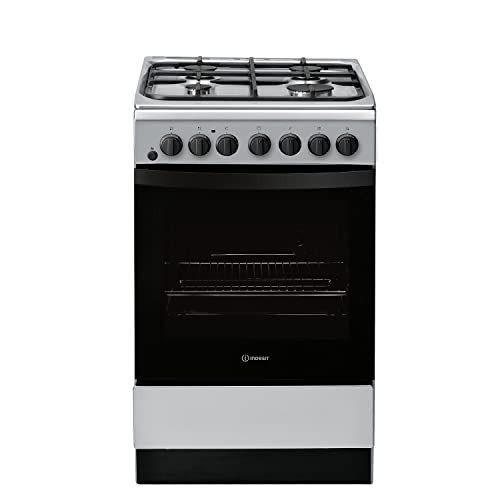Understanding Oven Hobs: The Heart of Culinary Crafting
In the realm of modern kitchens, the oven hob stands apart as an essential home appliance. Not just is it a main element for cooking a variety of meals, but it also influences kitchen aesthetics, performance, and performance. This post explores the kinds of oven hobs, their features, benefits, and upkeep ideas. Additionally, it attends to some frequently asked concerns to provide a thorough understanding of this important kitchen home appliance.
Types of Oven Hobs
Oven hobs can be classified into several types based upon their energy source and style. Comprehending these variations can assist customers make notified decisions when selecting the perfect hob for their kitchen needs.
1. Gas Hobs
Gas hobs use gas or lp as fuel, providing accurate temperature level control and instantaneous heat. They are preferred by lots of chefs for their ability to offer visual feedback through flame.
Pros:
- Quick heat-up time.
- Exact temperature modifications.
- Suitable with all kinds of cookware.
Cons:
- Requires a consistent gas supply.
- Security issues with open flames.
- Requires more upkeep.
2. Electric Hobs
Electric hobs are powered by electrical energy and function smooth glass or ceramic surface areas. They often can be found in two types: coil and strong.
Pros:
- Sleek appearance.
- No open flames, lowering safety risks.
- Easy to clean.
Cons:
- Slower to heat up and cool off.
- May need specific cookware (induction).
- Some might have unequal heat circulation.
3. Induction Hobs
Induction hobs utilize electro-magnetic energy to directly heat pots and pans. They just work with ferromagnetic pots and pans.
Pros:
- Very energy-efficient.
- Fast cooling and heating times.
- Safe, as the surface area stays fairly cool.
Cons:
- Limited to particular types of cookware.
- Greater preliminary cost.
- Can produce sound when in usage.
4. Solid Plate Hobs
These electric hobs include solid metal plates that warm up and keep heat for cooking.
Pros:
- Durable and dependable.
- Uncomplicated operation.
Cons:
- Takes time to warm up.
- Less effective than induction and gas models.
| Hob Type | Heat Source | Looks | Maintenance |
|---|---|---|---|
| Gas Hobs | Gas | Standard | Moderate |
| Electric Hobs | Electricity | Modern/Sleek | Low |
| Induction Hobs | Electro-magnetic | Contemporary | Low |
| Solid Plate Hobs | Electricity | Classic | Average |
Features to Consider When Choosing an Oven Hob
When choosing the best oven hob for your kitchen, there are several important functions to take into account. These consist of:
- Size: Ensure the hob fits the designated area in your kitchen.
- Variety of Burners: Consider your cooking design and how many burners you'll require.
- Control Type: Look for user-friendly controls, whether touch-sensitive or knobs.
- Security Features: Many contemporary hobs include precaution like flame failure devices or kid locks.
- Energy Efficiency: Choose energy-efficient designs to minimize energy costs and minimize your environmental impact.
Advantages of Using an Oven Hob
The oven hob supplies numerous benefits that deal with both amateur cooks and professional chefs. Here are some crucial benefits:
- Versatility: Whether boiling, frying, simmering, or sautéing, an oven hob accommodates different cooking techniques.
- Convenience: Many hobs included additional features like timers and automatic shut-off systems for included convenience in hectic kitchen areas.
- Improved Cooking Control: The instant heat reactions of gas and induction hobs enable for better control over cooking temperature levels.
- Design Enhancement: Modern hobs can boost the total aesthetic of a kitchen, adding a contemporary touch.
Upkeep Tips for an Oven Hob
To guarantee the longevity and efficiency of an oven hob, proper maintenance is essential. Here are some upkeep suggestions:
Regular Cleaning:
- Use a soft cloth and moderate cleaning agent to clean surfaces after each use.
- For induction and ceramic hobs, prevent abrasive cleaners to prevent scratching.
Inspect for Wear and Tear:
- Inspect rubber seals and connections in gas hobs routinely for any damages or leaks.
- Ensure electrical connections are safe and secure in electric hobs.
Expert Servicing:
- Schedule periodic maintenance talk to a certified service technician to avoid significant concerns.
The oven hob is a crucial part in any kitchen, functioning as a focal point for cooking endeavors. Whether choosing gas, electric, or induction, comprehending the different types, features, and upkeep requirements is necessary for making a well-informed choice. A well-chosen hob not only enhances cooking efficiency however also boosts the general kitchen experience.
Often Asked Questions (FAQs)
1. What kind of hob is best for a novice?
Electric hobs are typically preferred by beginners due to their ease of use and maintenance.
2. Can I utilize all pots and pans on an induction hob?
No, induction hobs need ferromagnetic pots and pans for them to work correctly.
3. How do I understand if my gas hob is working effectively?
Frequently inspect for even flame circulation and listen for any hissing noises that might show leaks. If in doubt, consult a professional.
4. Is a higher rate always better for hobs?
Not always. While Ovens Online -priced models might offer sophisticated features, numerous mid-range items provide exceptional performance and durability.
5. Can I install a hob myself?
It is advisable to employ an expert, especially for gas hobs, due to safety issues and regional guidelines.
By understanding the nuances of oven hobs, home cooks can make a well-informed decision that aligns with their culinary ambitions and kitchen designs. Choosing the best hob boosts both the cooking experience and kitchen aesthetics, making it a key investment for any home.

